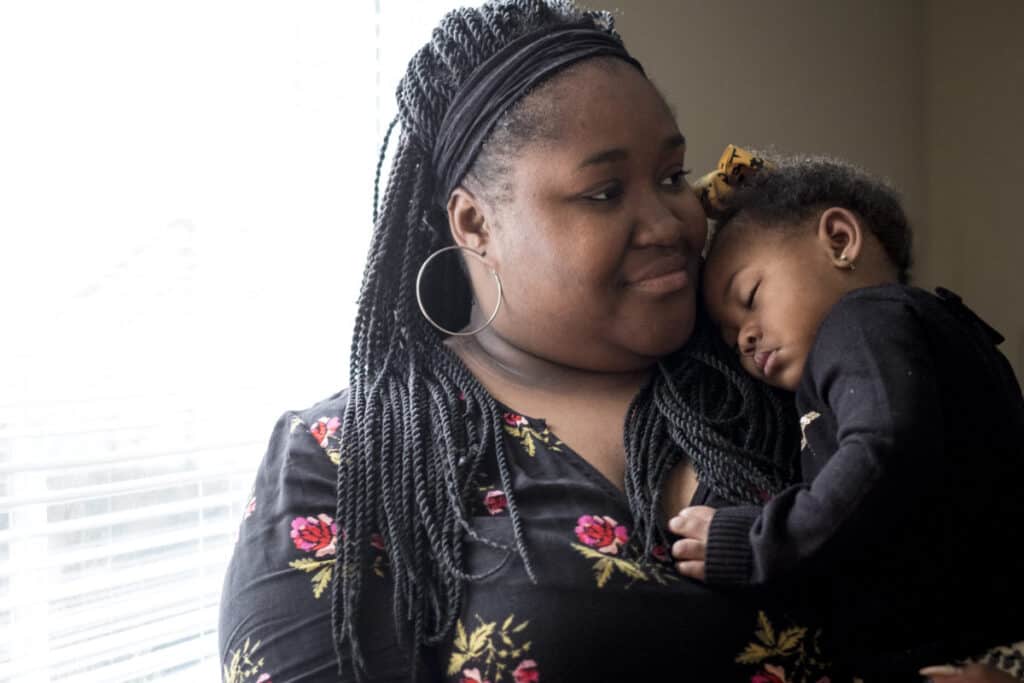If you have a child or young adult with disabilities, you’ve probably heard the phrase “transition to adulthood.” In this context, this is about how students with an IEP move from school-based services to life after school.
Schools have many ways to support students who have IEPs and help them prepare for life after high school. (If your child does not have an IEP, read more about the process.) This process is called Transition because your child will transition to life as an adult.
Transition planning can start as early as you like, but generally starts by age 14. According to IDEA, it should start at least by age 16 and at that time your child should be part of the IEP team if they are able.
Special education services end when a student turns 22 or graduates from high school, whichever comes first. After that, they will be supported by adult service programs, which differ by state. Transition planning continues until that point.
Students with disabilities have a right to be in school, with the services they need, until they turn 22 or get a high school diploma – whichever comes first.
Transition can be scary for the kids and parents. But the important thing is to be ready ahead of time, and to know what kind of support you can get.
There are 3 main steps in the transition to adulthood for youth with disabilities:
Step 1: Create a vision for your child’s future
We all have hopes and dreams for the future. The first step in transition planning is thinking about what you and your child want their future to look like.
This vision will depend on your child’s needs and abilities along with their preferences. The key is to aim high, follow their lead, if possible, and then decide on what support they need to prepare for that future.
Some tips to get started:
- Think about what you see your child doing after high school:
- Living with you?
- Getting a job or doing a job training program?
- College program?
- Encourage your child to think about their interests, values, and future goals
- Give them opportunities to practice making decisions and to learn about themselves
- Get advice from friends, teachers, or service providers
This vision will help you and your child make choices about their high school coursework and services, and this will all be part of the transition plan. Your goal is to work in partnership with the school to create a plan that will support your child’s needs as they transition to adulthood.
4 things to consider about your child’s future:
- Further education and training
- Employment
- Independent or supported living
- Community participation
The next step is to create a transition plan with your IEP team that addresses your child’s needs for support in those 4 areas.
Step 2: Make sure the IEP supports your child’s future goals
Your child’s IEP is an important part of the transition process. The IEP can help your child qualify for services during transition, but it must be detailed and specific. A diagnosis or explicit description of their challenges may allow them to qualify for job training, internships, and other special programs.
The IEP should include:
- All diagnoses that your child has (for example, write “autism” and “intellectual disability” if they have both)
- Detailed descriptions of the challenges they have that might affect their ability to live independently, get a job, or do academic work
- A clear description of your child’s vision for their future
- The services and accommodations that will help them prepare for this future
Set a high bar for your child!
Remember, they have a legal right to a Free and Appropriate Public Education (FAPE). This means more than just getting by. All students should get the support they need for their own goals. Make sure those goals are as high as you can reasonably expect!
Keep up with your changing teen
Things change as your child gets older, especially as they start to go through puberty. There will be many new things happening during the high school years: harder course work, different social challenges, and perhaps college prep activities. Not to mention worrying about their future, which every high school student faces. Your child may also have new goals like learning to drive or going to college.
You may need to adjust the IEP to reflect the support your child needs for these new challenges. Since the IEP is a legal document, it’s important to include any new goals and services here, in addition to writing the transition plan.
Even though you only have an IEP meeting once a year, you can ask to meet with the team anytime. If you think your child needs more — ask for more!
Step 3: Develop the Transition Plan
The Transition Plan is a detailed plan to address your child’s unique needs and goals for adult life. It will help set up services and support for life skills, social skills, job readiness, self-advocacy, independent living, and more. It is not a legal document like the IEP, but it is required that the school create this with you by the time your child is 16. (It may be sooner. For example, in Massachusetts, transition planning is required to start at age 14.)
If your child has an IEP, find out who will be coordinating their transition services. The Transition Coordinator will be part of the IEP team and help you with transition planning.
During the transition, the IEP team should also include:
- Your child (if possible)
- The guidance counselor and transition coordinator (if there is one)
A representative from any adult service agency that will be providing transition services
Here’s what you can do:
- Ask your IEP team if there is a transition coordinator, or a main contact person who is in charge of transition. This person will be your main point of contact
- Keep in touch with your IEP team. Make sure they are involved in course selection and transition planning. Work with them to create a graduation plan you feel is best for your child. It’s always good to try for the highest level you think your child can manage
- Ask questions if you don’t understand something, or if you feel that your child is struggling. There may be services or support that you don’t know about
- Encourage your child to keep in touch with the team as well
You will use your state’s Transition Planning Form (TPF). It will usually include goals for the future and an action plan that describes what services, training, and activities will help your child meet those goals.
What kind of services might be in the transition plan?
High schools have lots of services and programs to help students prepare for their goals for adult life. It depends on what your child’s path looks like. Here are some examples:
- College or technical school: study skills classes, guidance on classes to take, support for the application process, and accommodations for entrance exams
- Employment: career exploration activities, vocational programs to help learn job skills, work readiness programs to learn responsibility and communicating in the workplace, internships, and more
- Independent or supported living: special instruction in life skills, activities of daily living, communication, and social skills
Tips for developing the Transition Plan:
- Work with your IEP team to create a plan that you agree with. Include your child in the process (if they are able). Some schools have a specific transition coordinator, who will join the IEP team, and the guidance counselor may also join
- Think carefully about the skills your child will need for their life after school. Job readiness? Self-advocacy? Independent living skills like shopping and managing money? What support will they need to learn these skills?
- Make sure to address your child’s needs for support in all aspects of their adult life: social skills, life skills, independent living, job training, and being engaged in their community
- Give the school permission to connect you with outside adult service agencies. They should be involved in the planning process because they can start providing training and other services during high school. You don’t have to work with any agency if you don’t want to, but you should see what they have to offer. You can also contact the agencies yourself
What would an agency do for my child?
- Outside agencies will be very helpful! They can provide training and other services to support your child’s goals during high school and afterwards
- Make sure to give the school permission to connect you with outside agencies in your state. Your IEP team or transition coordinator will explain to you what they do
Learn more about planning the transition to adulthood:
- Step-by-step Transition Timeline: Written for Louisiana, but useful for people from any state
- Self-advocacy for teens
- Government Benefits and financial support
- Transition Information for Parents and Students with IEPs: Brochures from the Federation for Children with Special Needs. Available in English, Spanish, Haitian Creole, Chinese, Portuguese, and Vietnamese. Written for Massachusetts but has useful information for families from any state



